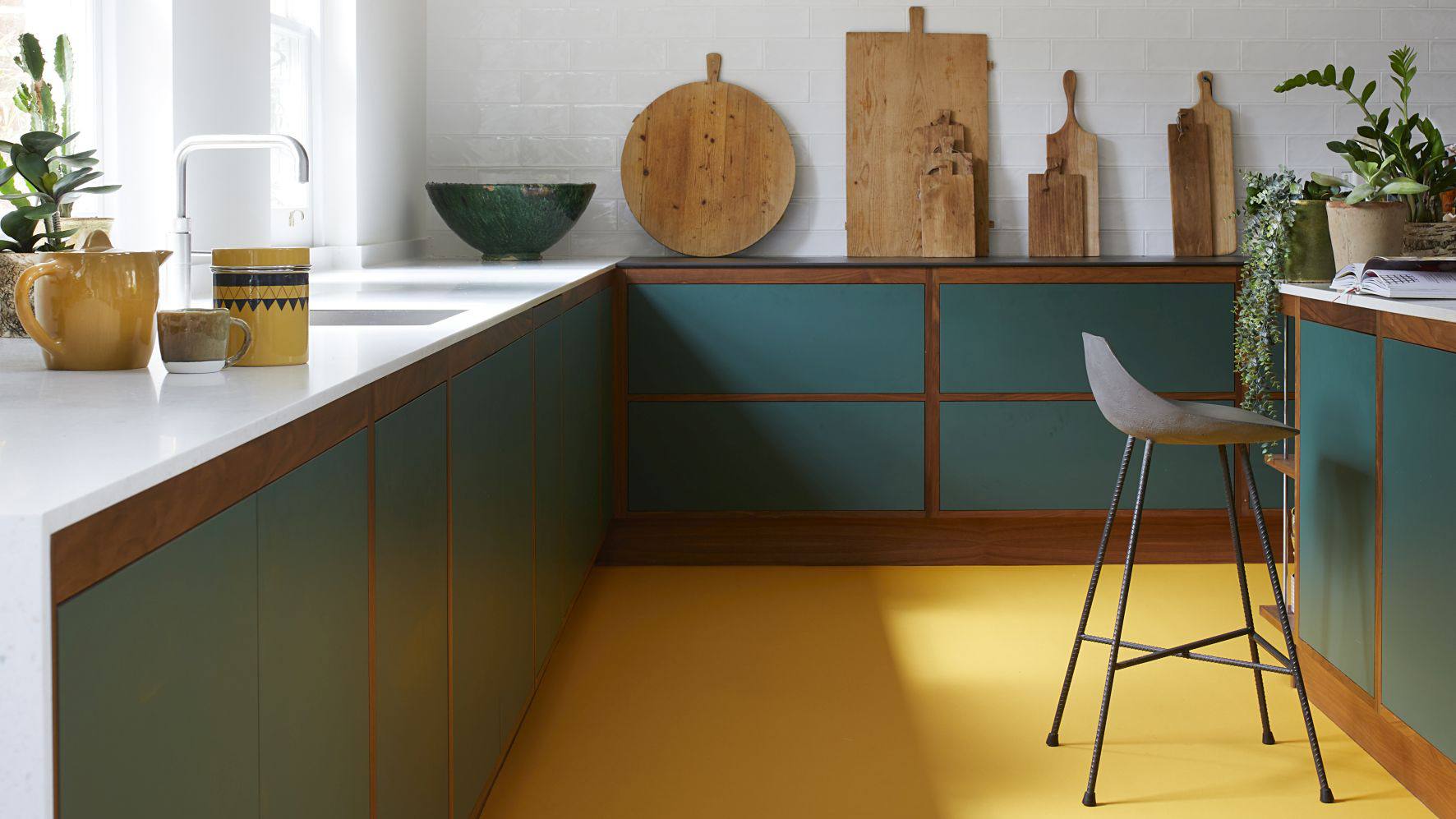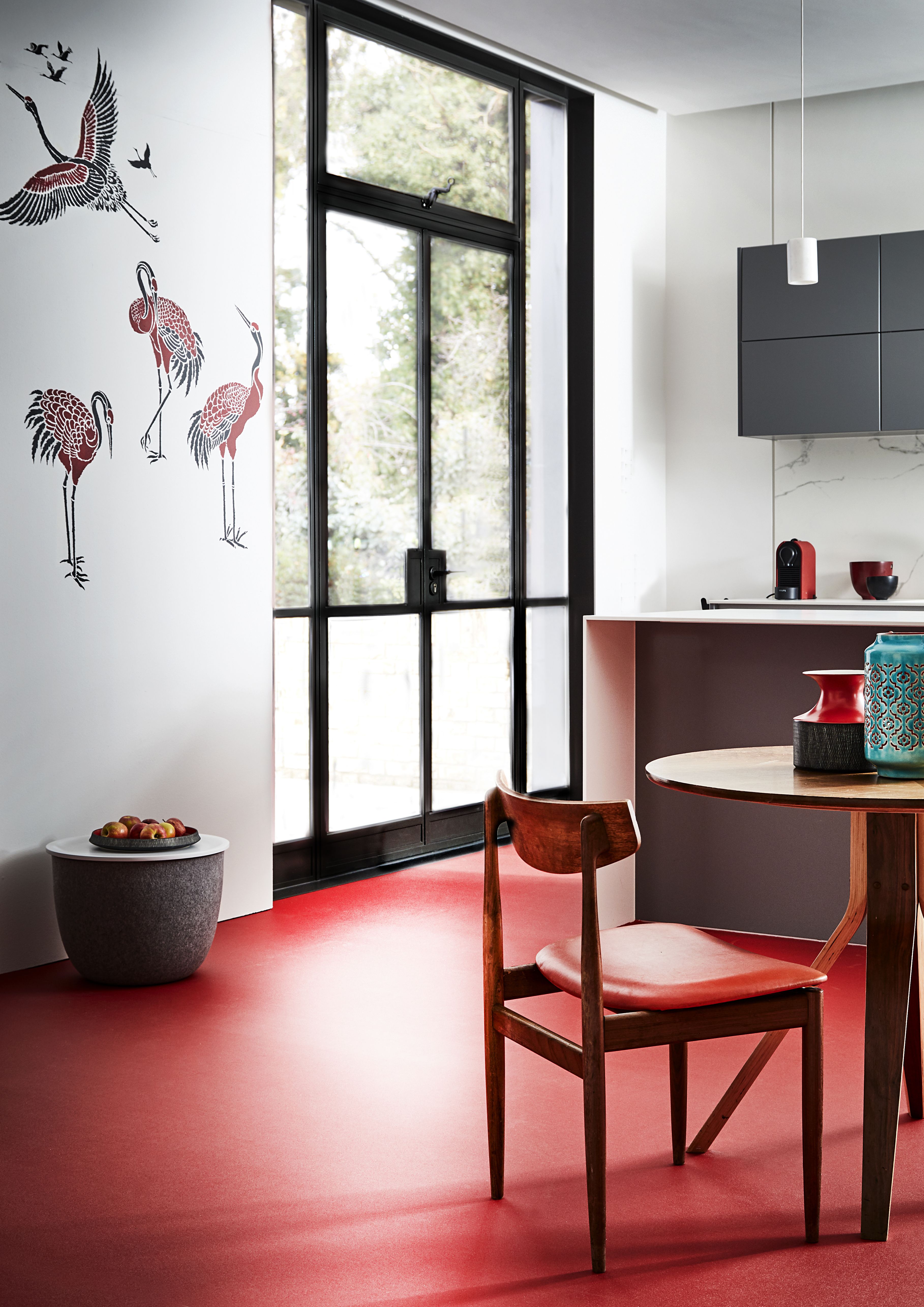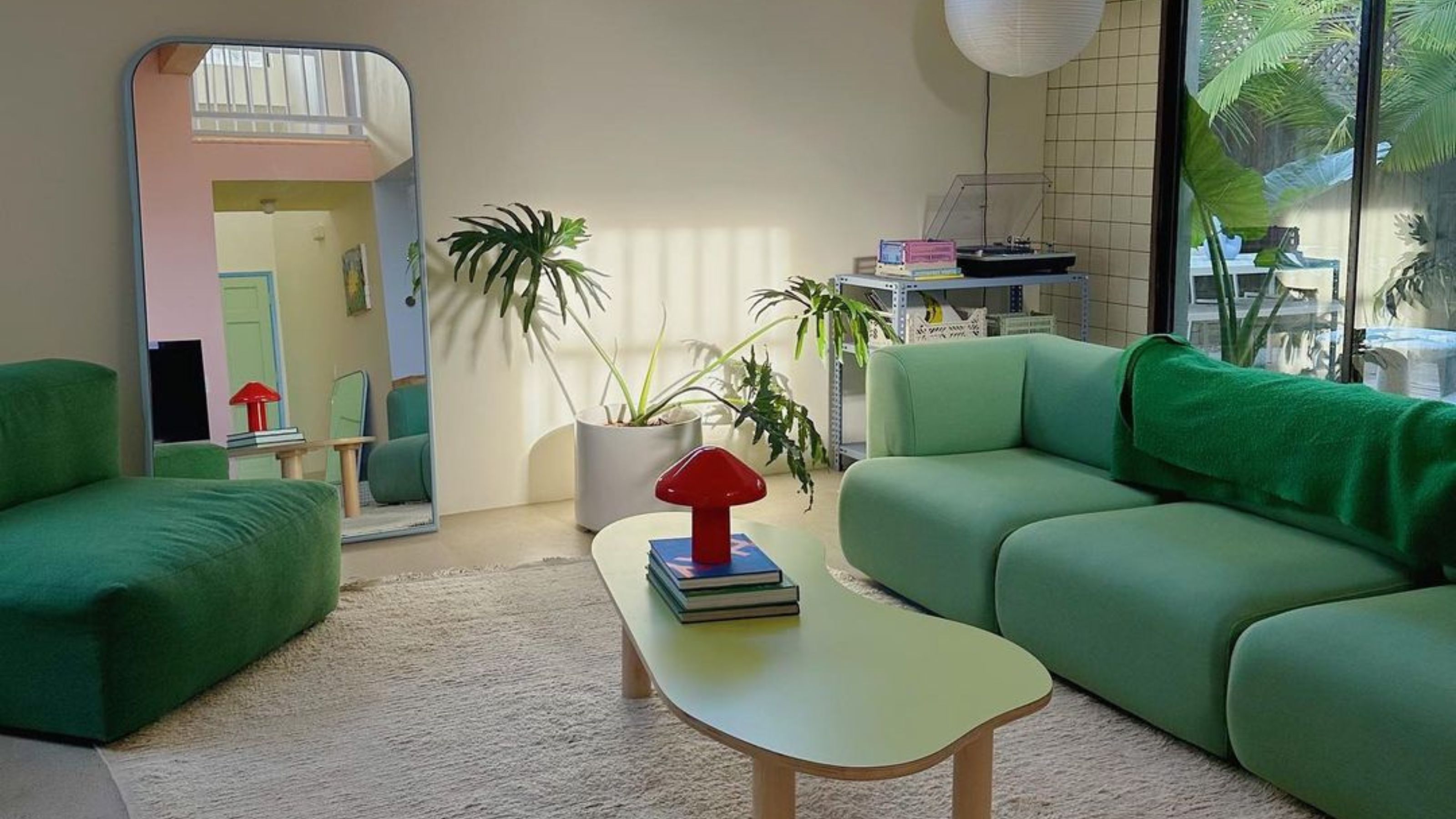
Resin flooring: once a futuristic and rare flooring option, it's now becoming a popular choice for contemporary design schemes. Resin can be made to look similar to a concrete floor, but it also offers plenty of room for experimenting with colour and texture. Highly polished or matte, bright or neutral, you can achieve a variety of looks with resin.
But the strongest argument for resin is its practicality: stain and dirt resistant, this is a great option for high traffic areas. It's also hypoallergenic and a great replacement for carpeted floors. Even better, resin works with all types of underfloor heating.
If you're still deciding on your flooring material, you might find our guide to how to choose the best kitchen flooring and how to choose the best bathroom flooring, helpful reads.
What is resin and what are its benefits?
Resin flooring varies according to the manufacturer, but is made from synthetic materials such as polyurethane or epoxy resins, or, in some cases, natural materials. Resin flooring is poured on site for a perfectly flat finish.
It is waterproof and hygienic, as well as anti-slip and low-maintenance, and can be used with most types of underfloor heating. It can be installed on any stable substrate, provided that it is free of movement and moisture. It won’t crack, become loose or peel off over time.
Additionally, resin adopts the given room’s ambient temperature, which makes it warm in the winter and cool during summer.

The colour possibilities for resin are endless, and flooring can be found in every shade in the RAL and NCS colour charts. Some companies also offer options for quartz and decorative flakes, which can be added to the resin.
How much does poured resin flooring cost?
Resin or concrete?
Wondering which you should choose? Consider the following points:
1. Concrete is more readily available, and can come as tiles.
2. Resin offers more choices in terms of colour.
3. Both concrete and resin can have a matt, semi-gloss, or gloss finish.
4. Resin flooring will feel warmer underfoot on its own, but both resin and concrete can be combined with underfloor heating.
With resin flooring, as with concrete, the larger the room, the cheaper each square metre will cost. A resin floor can be applied as a thin layer on top of an already existing floor structure, and this will be cheaper than installing a whole floor from scratch.
Resin flooring may need to be finished with an anti-slip coating which will add to the cost. If a substrate or structural layer needs to be applied to the ground before the flooring is poured, this will increase the cost of installation.
The average costs are similar: expect to pay upwards of £100 depending on your specifications.

Where should you use resin flooring?
You can use resin flooring in any room in the house, and although it may seem like they are only appropriate for modern homes, the variation of colours and textures makes them suitable and practical in any home.
They were originally designed for the commercial sector because they are hardwearing, hygienic and low maintenance.
Kitchen flooring
The glossy finish of a resin floor is a good way of reflecting light around a space. Incorporating it within a kitchen extension, with plenty of glazing, is a sure fire way to create a naturally light area.
Garden flooring
Poured floorings are seamless, and lend themselves to the continuous look of an open plan space. They can also be used outdoors, so they offer the perfect opportunity to incorporate the same flooring throughout, making the garden feel connected to the rest of the house.
Bedroom flooring
If you are going for a minimalist look in a bedroom, whether its part of a contemporary or Scandinavian scheme, resin flooring makes a practical replacement for floorboards and complements a streamlined style.
Installing resin flooring
Resin flooring is sold as a supply-and-fit product and should be laid by a professional, who should also give you a warranty or guarantee for the work.
Resin flooring is a highly specialised product and can only really be applied by a professional. It has made the move from the commercial sector recently; so cheaper alternatives either don’t exist, or haven’t found their way to the market yet.
Unlike concrete flooring, resin is not available as a tiled option, at least for the time being.

Maintaining and cleaning resin flooring
Resin floors are very low-maintenance: simply sweep away any debris then use a recommended cleaner. Most resin floors only need mopping with a damp cloth, but some can also be steam-cleaned. You may also be required to apply a clear glaze, wax or sealant every now and again to protect the surface from minor scratches.
Check out our pick of the best steam cleaners and best steam mops so you can really easily keep your resin floor clean.
Read more flooring know-how:
Join our newsletter
Get small space home decor ideas, celeb inspiration, DIY tips and more, straight to your inbox!
Anna is a professional writer with many years of experience. She has a passion for contemporary home decor and gardening. She covers a range of topics, from practical advice to interior and garden design.
-
 5 Gen Z and millennial influencers to follow for all things homes and interiors
5 Gen Z and millennial influencers to follow for all things homes and interiorsNeed some on-trend home and interior inspo? These are the five millennial and Gen Z influencer accounts I can't stop scrolling for small homes and rentals
By Louise Oliphant
-
 8 calming paint colors to create a blissful home sanctuary
8 calming paint colors to create a blissful home sanctuaryRelax, revive and renew with a soothing palette of mindful paint shades.
By Sophie Warren-Smith
-
 10 dorm room ideas to make your place the cutest on campus
10 dorm room ideas to make your place the cutest on campusHeading to college soon? These dorm room ideas range from sweet styles to savvy solutions...
By Eve Smallman
-
 Alcove ideas: 25 ways to style an awkwardly shaped space
Alcove ideas: 25 ways to style an awkwardly shaped spaceFrom home offices to cozy reading nooks, copy these alcove ideas to create an inspiring space – with shelving or not...
By Hebe Hatton
-
 It's true, Target's Studio McGee collection has all of your holiday decorating handled
It's true, Target's Studio McGee collection has all of your holiday decorating handledTarget's new Studio McGee installment will deck all of your halls — and so much more!
By Brittany Romano
-
 Spotted: 9 celebrity home decor brands that will have you living like your favorite A-listers
Spotted: 9 celebrity home decor brands that will have you living like your favorite A-listersSo many celebrity home decor brands to shop for, so little time.
By Brittany Romano
-
 This World Market mirror rivals *that* designer best-seller (at a fraction of the price!)
This World Market mirror rivals *that* designer best-seller (at a fraction of the price!)This World Market mirror is a dead-on doppelganger for Anthropologie's version — but at a fraction of the price.
By Brittany Romano
-
 Chloé Lukasiak reveals how she's decorating her first 'big girl' apartment
Chloé Lukasiak reveals how she's decorating her first 'big girl' apartmentChloé Lukasiak reveals the process of designing and decorating her 'young but chic' apartment.
By Brittany Romano